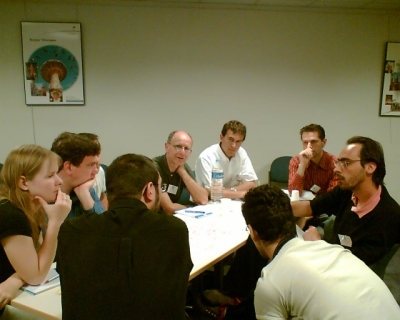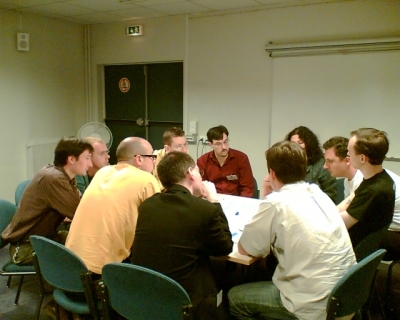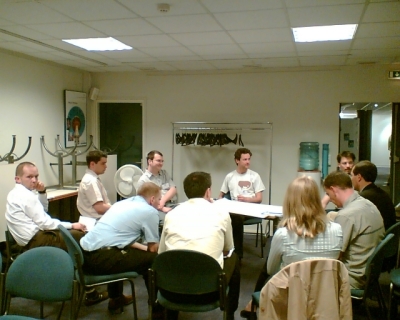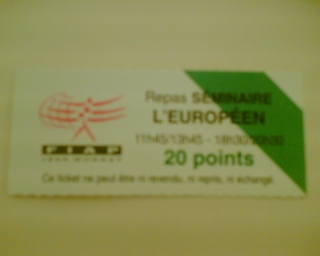Me and my binôme
The first session of the day was “Un clavier pour deux“, presented by Jacques Couvreur and Nicolas Charpentier, about the theory and practice of pair programming (“binômage”). Nothing very new for me, but this was a clear and solid introduction. I thought the presentation would have been better with a more “Zen” presentation and with fewer slides, as Jacques and Nicolas had to skip some slides due to lack of time.
Les chiffres pour convaincre
Olivier Lafontan gave a presentation with “lots of numbers to convince managers of the value of agile“. Olivier used a spreadsheet to contrast different project approaches and see which one delivered the most value, which one broke even first, which one required the least amount of capital investment…
The worst strategy was the one where the application is released (and stops costing money and starts earning money) at the end of development. Duh! A lot better is an strategy where the application is deployed incrementally, with the assumption that each increment has the same value (4 increments deliver 25% each of the value). That’s not necessarily a good assumption: if we can schedule high value stories early in the project, the project becomes even more profitable. We can do even better than that: if the last remaining stories have a poor value/cost ratio, why not drop them altogether? In this case we only deploy 3 (or even 2) of the 4 planned increments.
Olivier then used the same technique to show what the effects are on programme management. Here the results are even more dramatical. If we use the last strategy (implement stories by value, drop low value stories) we can start more projects and start them sooner to get more benefit.
We had some discussion about estimating techniques, the organisational maturity required to implement these techniques and ways to incorporate the maintenance cost in the simulation. I believe that if we include maintenance costs, we can also show the value of delivering high quality, tested, refactored code.
A great session. To make it perfect, Olivier should include graphs of the spreadsheets in the presentation. Loads of numbers in small font are hard to read and interpret. A few graphs (which alternative gets to break even first, which alternative has the highest value after 2 years…) would make the conclusions really clear.
If you don’t do this already, start asking your customer to estimate the value of user stories. Estimating value is quite easy if you do it the ‘XP Game way‘: sort the stories from high to low value, compare with previous stories to have consistent estimates, group and assign relative business value if you have no previous stories. Economics for beginners:
- Money today is worth more than money tomorrow
- Look at value/cost when buying stuff
- The cheapest story is the one not implemented
- Money costs money. Reduce your investment by incremental funding and rapid payback.
And remember kids: if your customer says they can’t put a value on a story, assume that the story is worthless.
Maybe your CIO or IT manager won’t understand this. Talk to your CFO and CEO, they will understand the value of agile.
More about XP Day France next post



